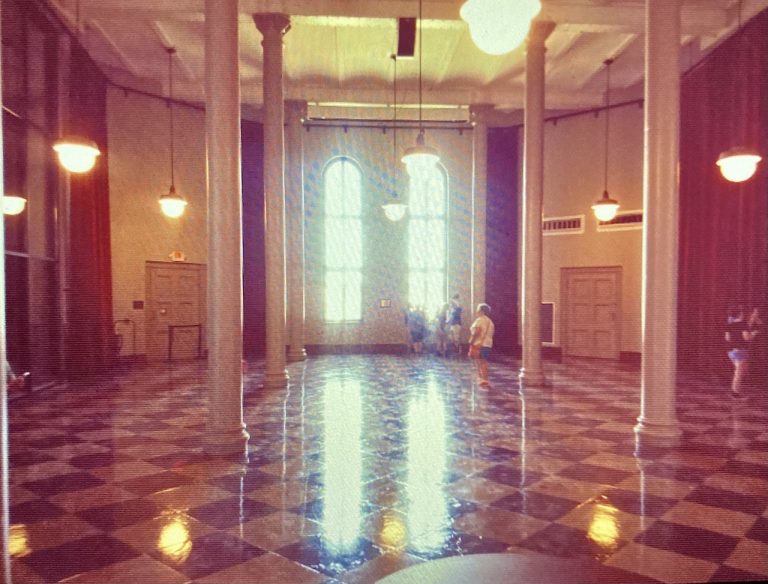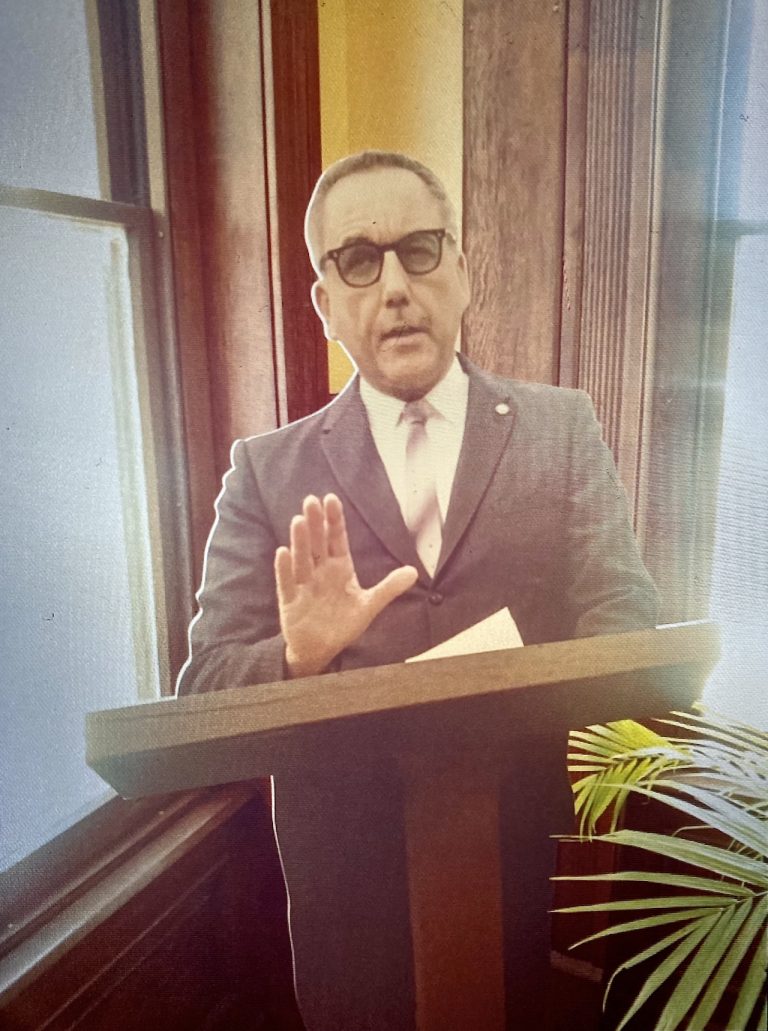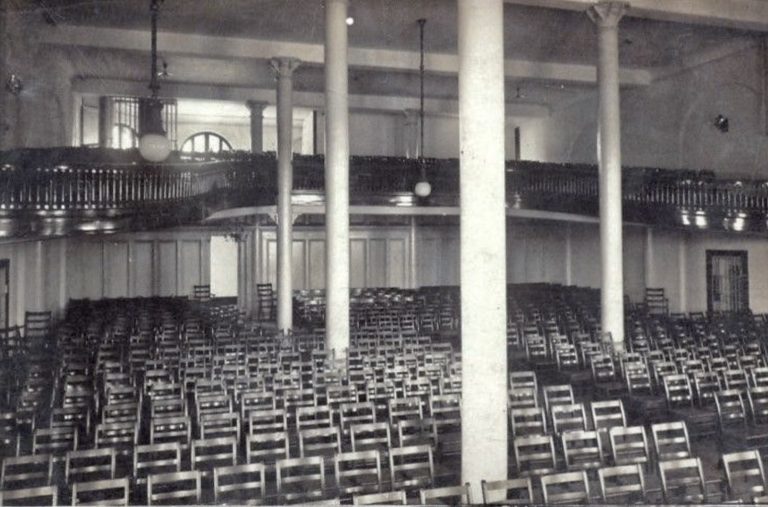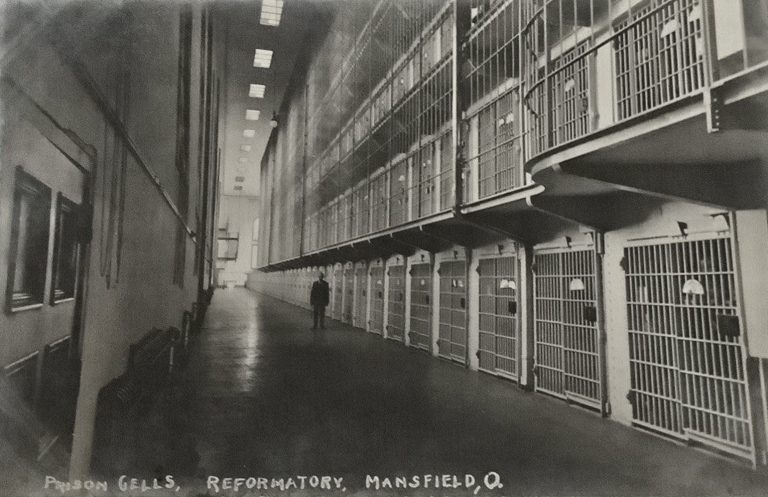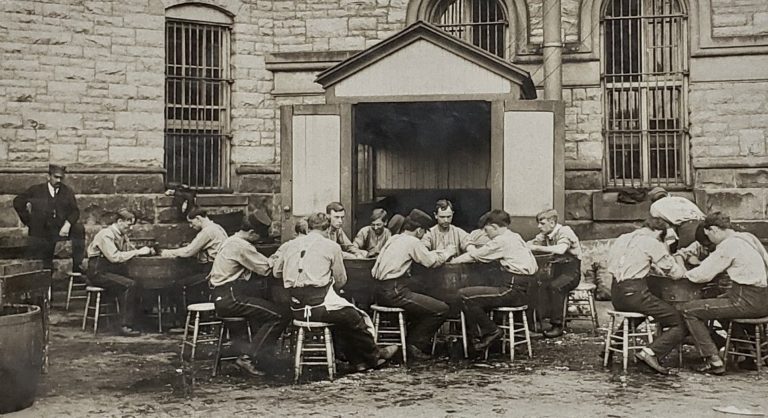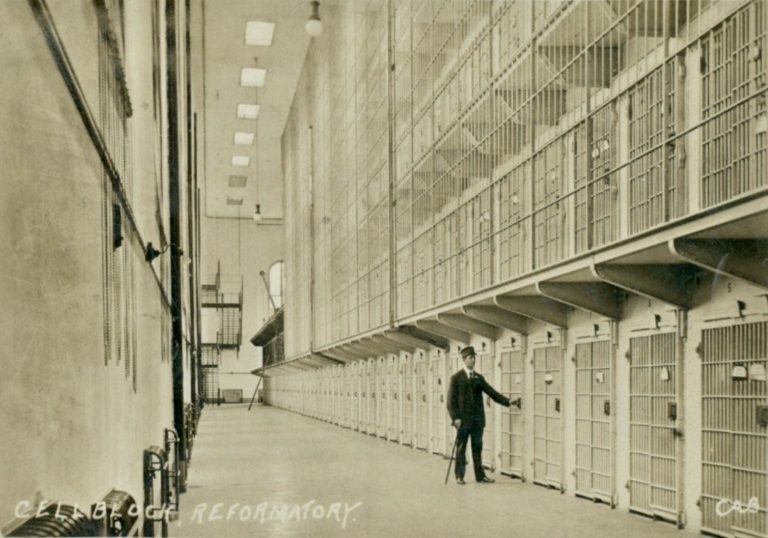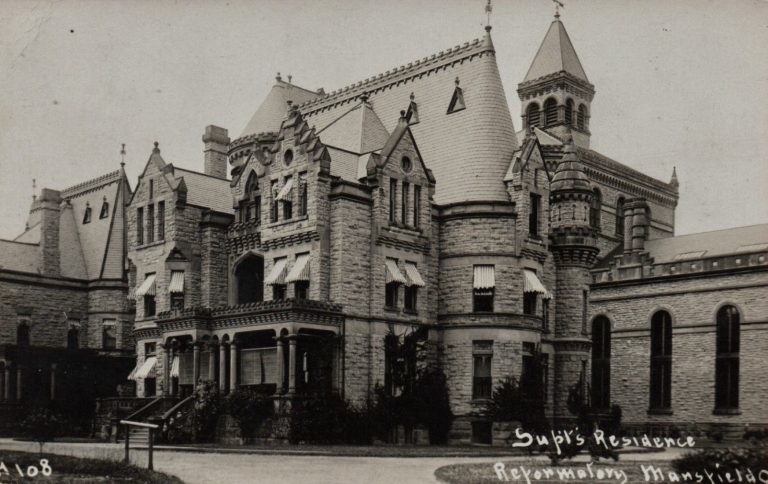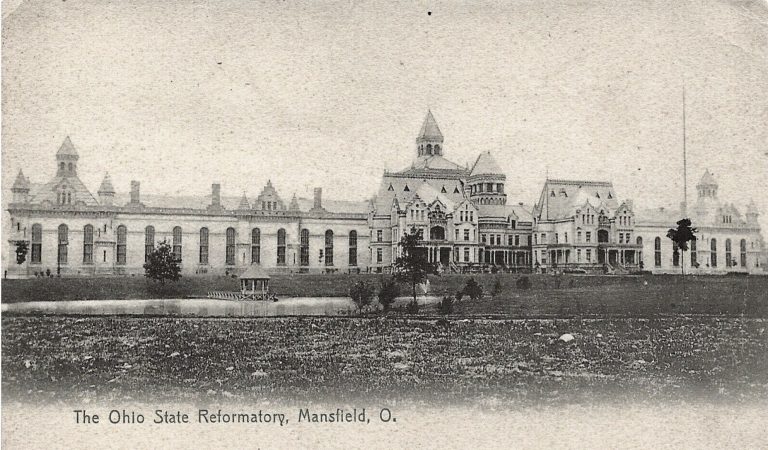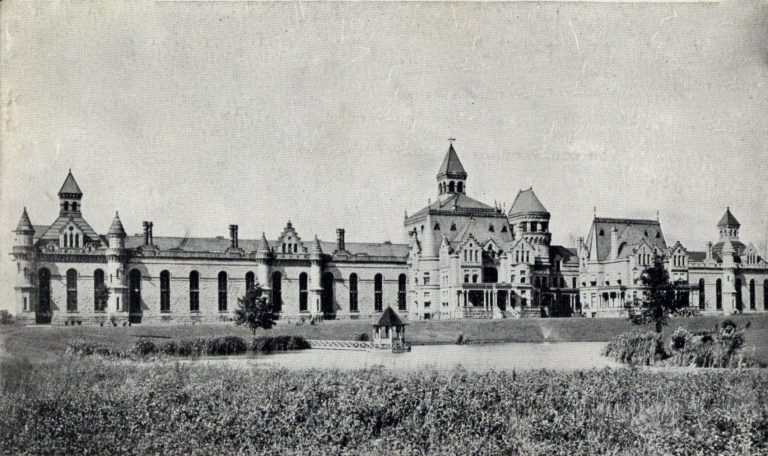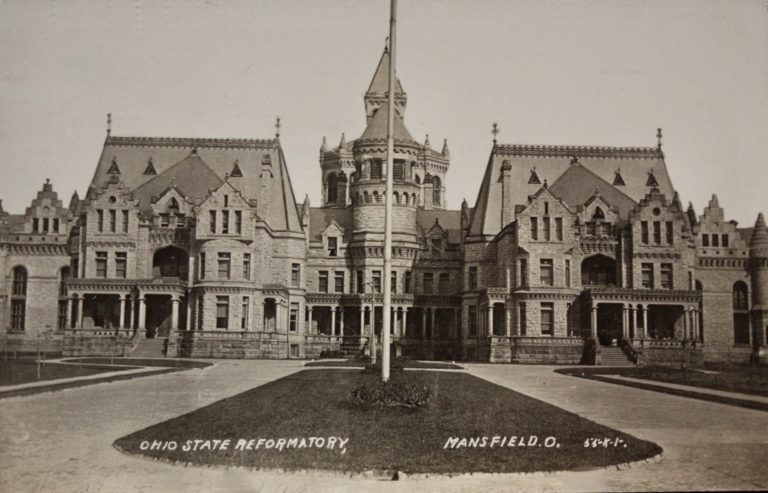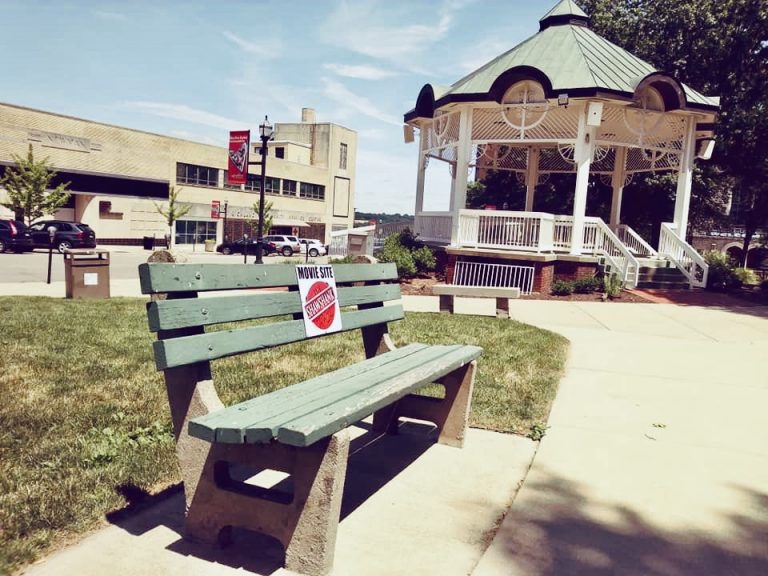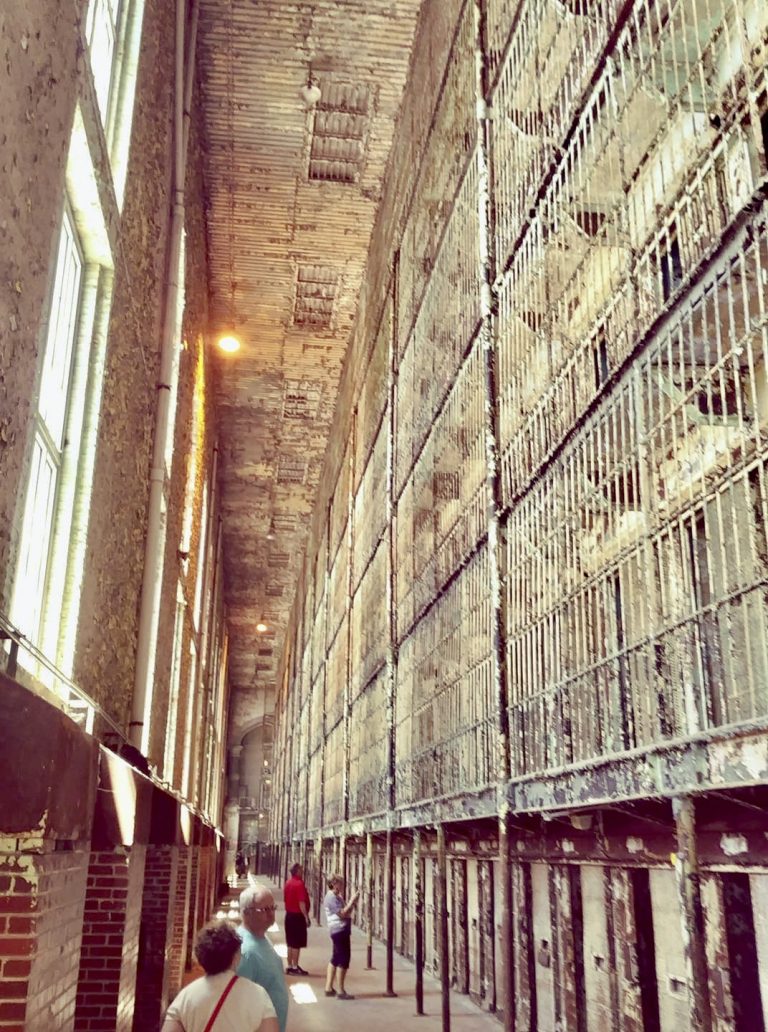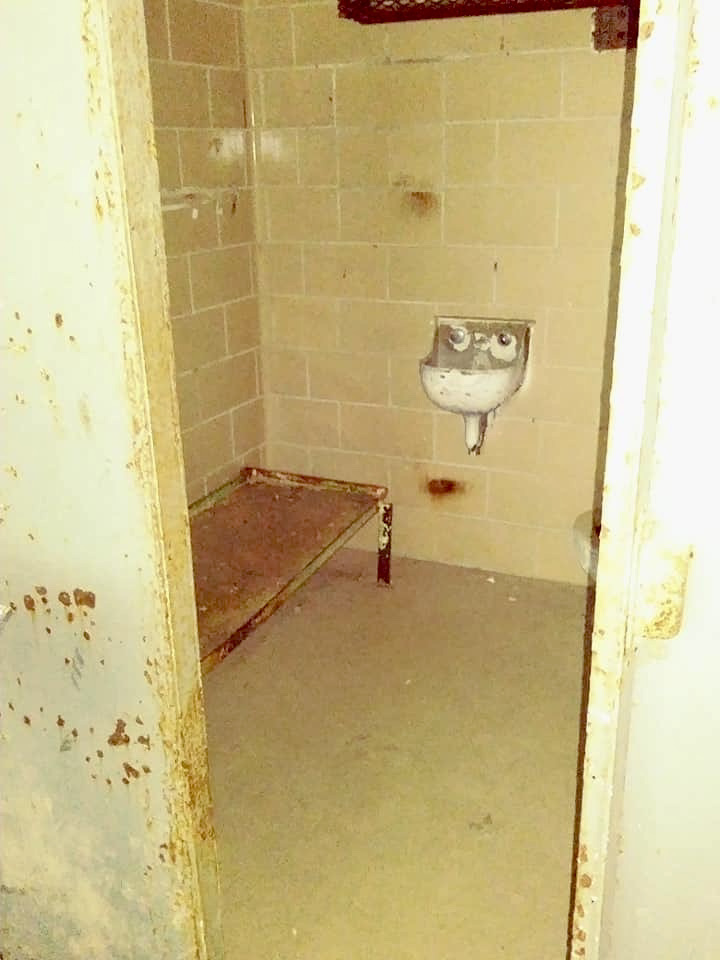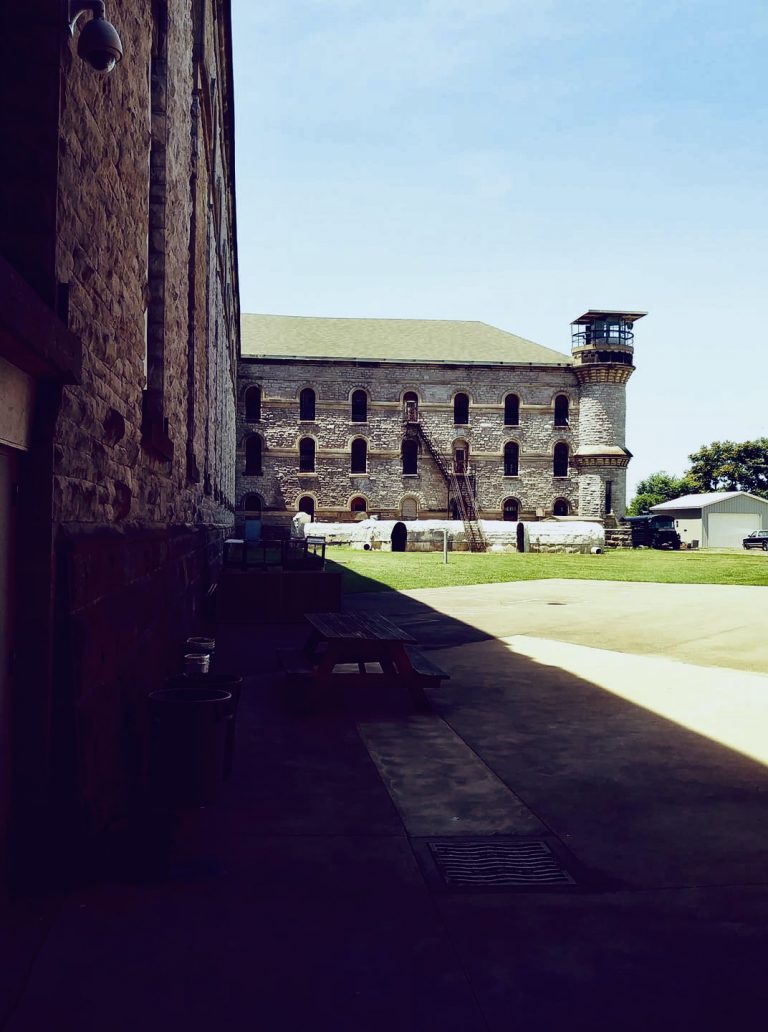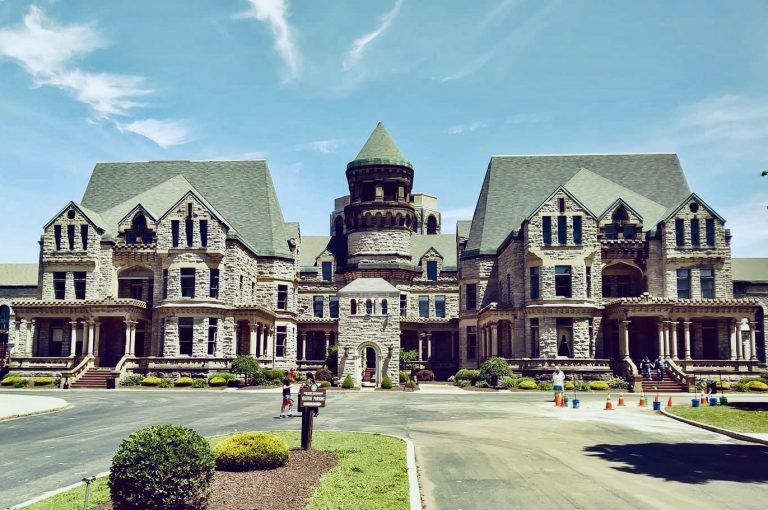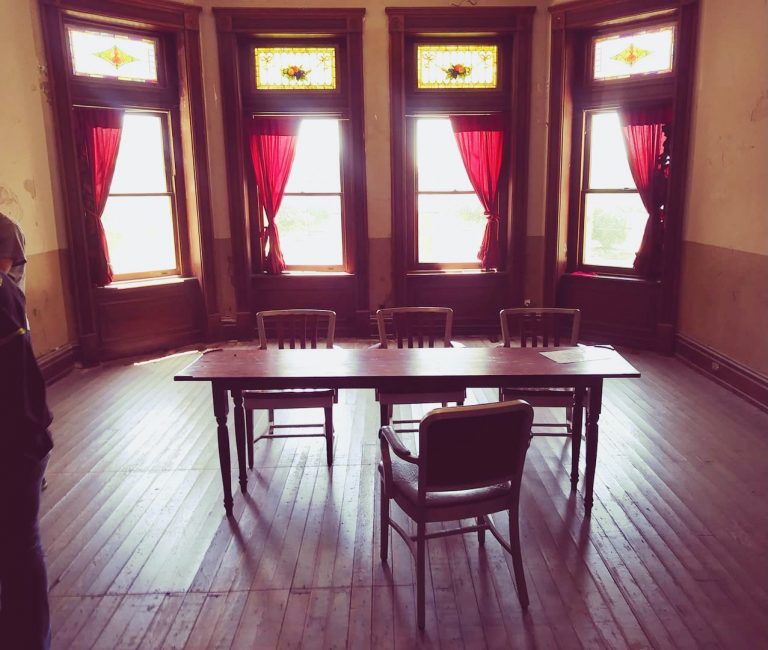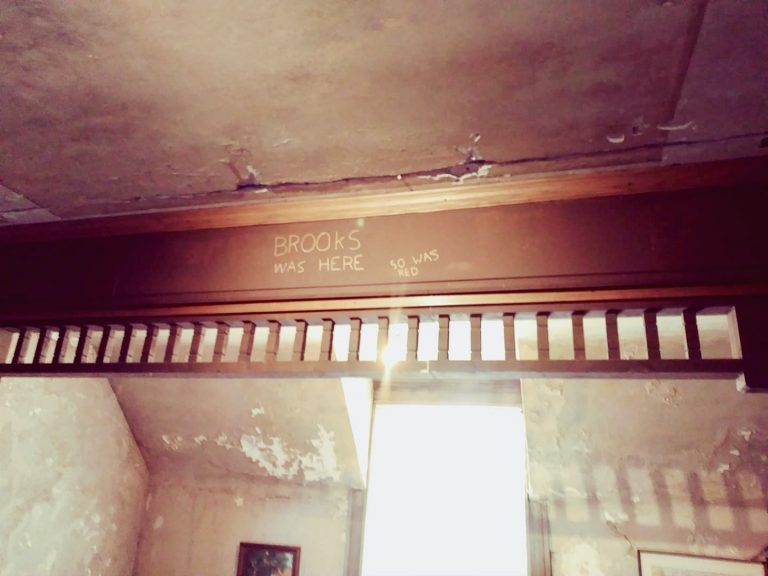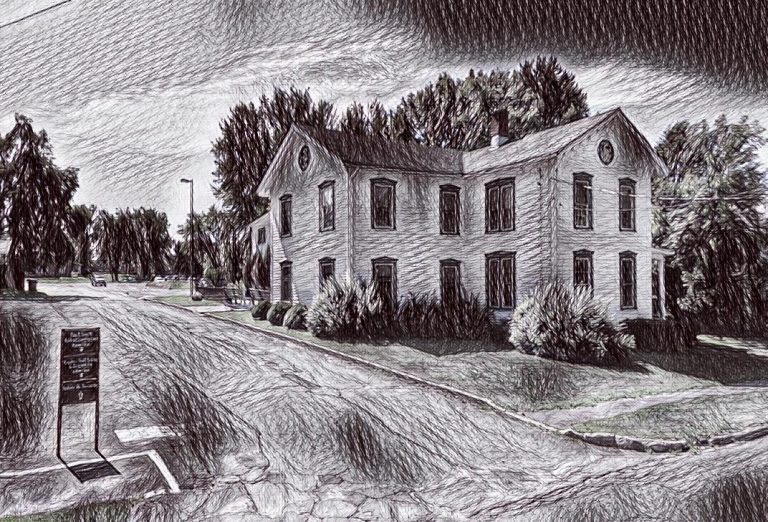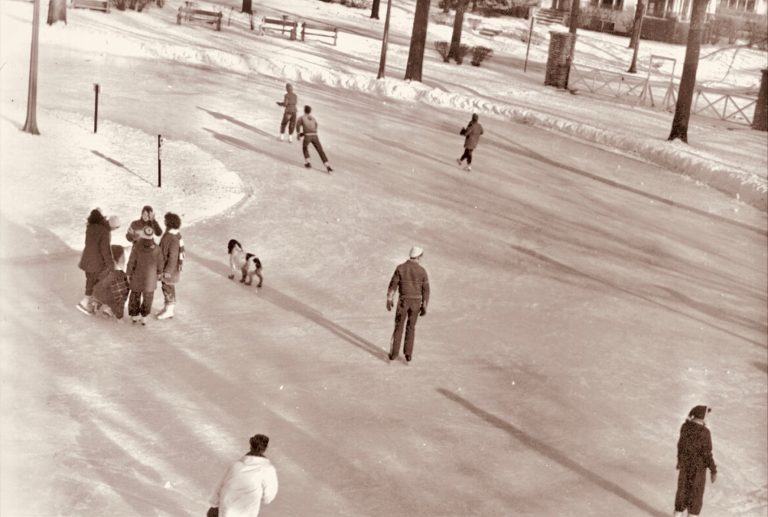The Ohio State Reformatory, Setting For The Shawshank Redemption Film
Built on a field used as a training camp for Civil War Soldiers, the Ohio State Reformatory in Mansfield began as a youth reformatory prison upon opening in September of 1896. Construction itself wouldn’t be completed until 1910 and the mixture of architectural styles including Gothic, Romanesque and Queen Anne would give the expansive prison built at a cost of $1.3 million an imposing exterior that, if anything, betrayed the hauntingly cramped dwellings within.
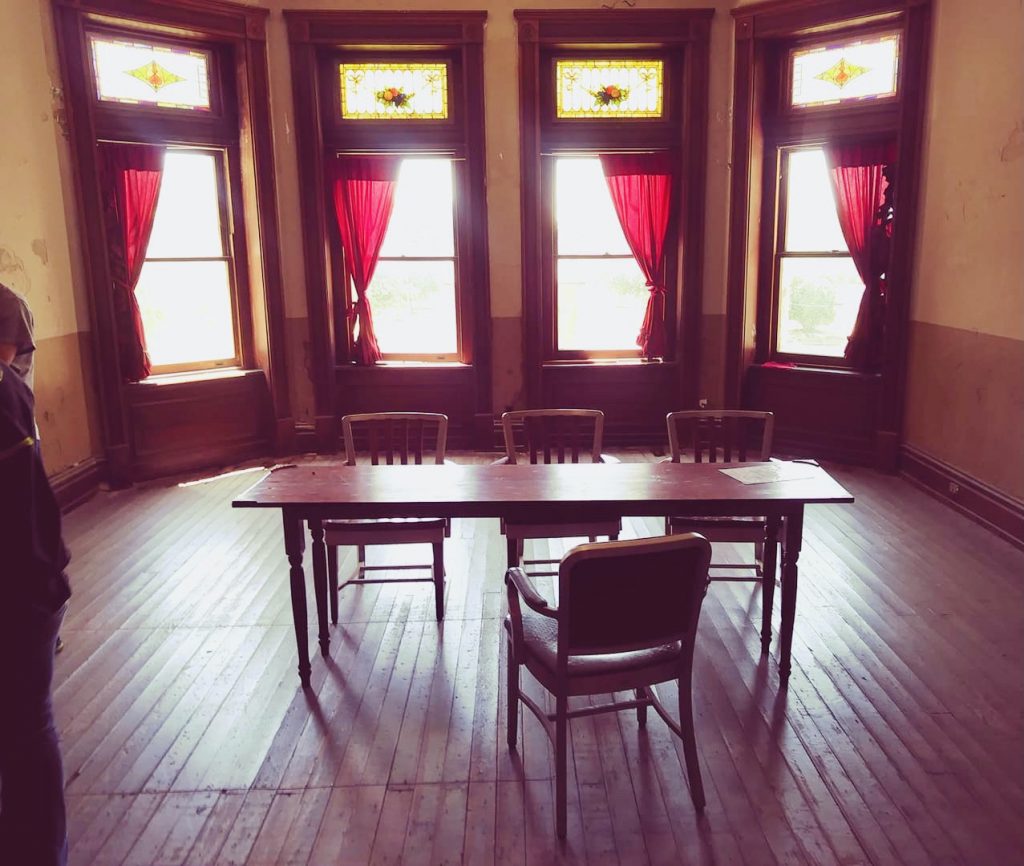
In 1986, just three years after being added to the National Register of Historic Places, the prisoners of the Ohio State Reformatory won a class action lawsuit to permanently close it due to overcrowding and inhumane conditions. It would be another four years before the prison would close as it remained open while the new prison was constructed next door.
Many of the buildings on the grounds were demolished after its closure and the reformatory itself was scheduled to follow when producers for the motion picture The Shawshank Redemption came knocking. Desperately seeking a filming location for the Stephen King adaptation of his novella, Rita Hayworth and the Shawshank Redemption, finding a full-sized prison in operable condition proved to be a tough task. With only two options the producers chose the Ohio State Reformatory, ultimately saving it from the wrecking ball… at least for the interim.

While many of the interior locations for The Shawshank Redemption were filmed on-site, the cell blocks were built and filmed on sound-stages. One could argue that doing so allowed the director more control over the filming environment, but one look at the interior of an actual cell provides all the understanding as to why sets were built for those particular scenes – and why the prison was deemed inhumane.
The cramped cells were often double-bunked for two occupants, neither one having scant room to themselves other than their small beds. An actor such as Tim Robbins, who is 6′ 5″, would have to stoop under the cell’s entrance to get inside and most likely find the interior all the more claustrophobic than an average-sized individual.
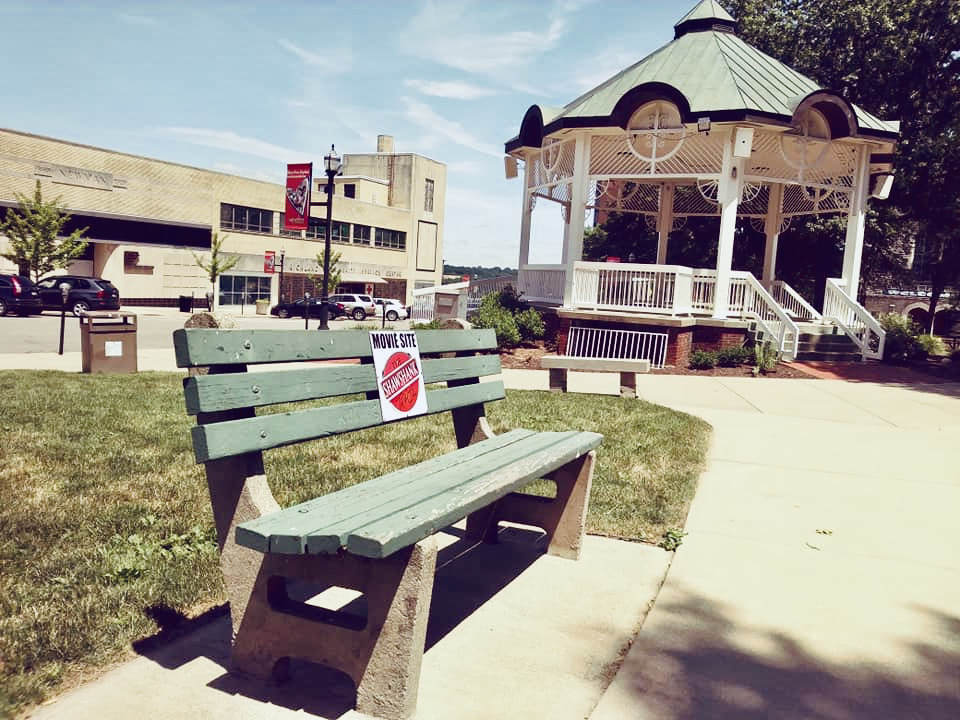
How The Setting Plays A Role In The Shawshank Redemption’s Success
The world of the story itself, the prison, is the context in which the theme of the story is placed: finding hope in the most hopeless of situations. Ironically, the architectural styles of the reformatory were chosen by Levi T. Scofield “to help encourage inmates to become reborn back into their spiritual lives,” yet the prison is filmed in dark grays and colder hues and embodies a reflection of the main character’s worldview with regard to the theme – except most people don’t understand the story’s main character is actually Red as opposed to Andy Dufresne who is the story’s protagonist.
This is why the story uses a first-person perspective from Red’s point of view and why Andy’s character comes across as a bit cold and reserved. We’re not meant to get too deep into his shoes because more people in reality have, at some point or another in their lives, had their faith tested to the point it’s hard not to become cynical like Red. Very few of us have Andy’s iron-clad belief with regards to hope, so the audience is put squarely in Red’s shoes to experience the story’s unfolding which results in a much more powerful impact.
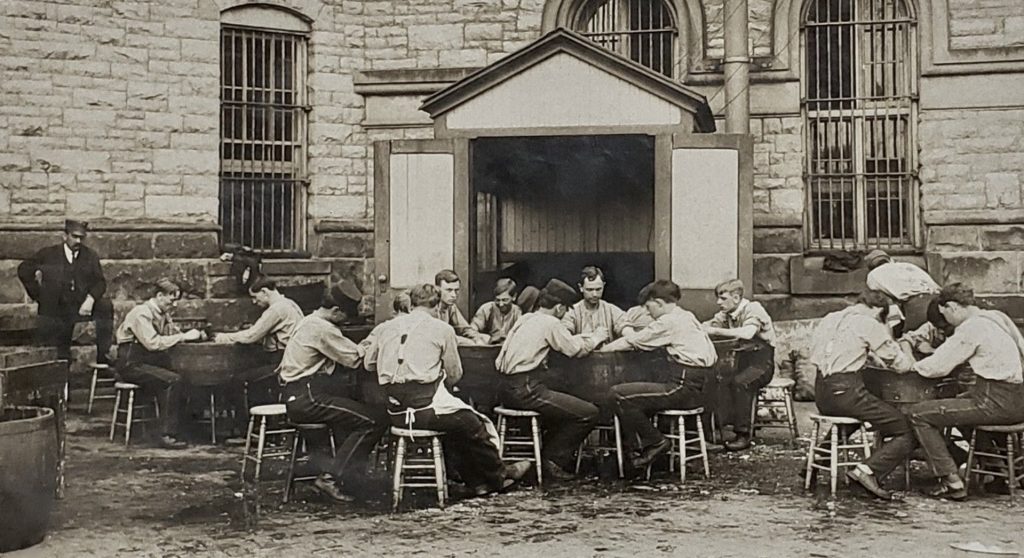
The events that happen in the story, from murder to rape, far outweigh the affirming values of hope in order to give credence to Red’s perspective and make the viewers identify with the hopelessness while continually testing Andy’s values as the story’s protagonist. Though it may seem that Red is telling a story about Andy Dufresne, what he’s really doing is telling a story about himself and how Andy influenced him his perspective to change from one of hopelessly institutionalized to that of a free man full of hope for the future.
In almost every scene we have what is an essentially stoic and reserved Andy, described early on by others as “a particularly icy and remorseless man” and as “that tall drink of water with a silver spoon stuck up his ass” in an effort to garner sympathy via misjudgment – but not empathy which is key for an audience’s connection to a character, a fact Entertainment Weekly‘s Owen Gleiberman felt a detriment to the film, stating “laconic-good-guy, neo-Gary Cooper role, Tim Robbins is unable to make Andy connect with the audience.” True storytellers understand this is all by design to create psychic distance.

Whether he’s about to be thrown off the rooftop or in the courtyard discussing his Zihuantanejo desires, we’re barely afforded much of a reading towards Andy’s emotions because it’s Red and his reactions to the myriad of situations Andy finds himself in that the audience obtains perspective from and a means to measure the emotional weight of them by – hence we’re meant to connect with Red.
Even the thought of a pick-axe tunneling through a wall is dismissed by the audience through Red’s reaction once he receives it. “It would take a man about six hundred years to tunnel under the wall with one of these,” – and we believe him.
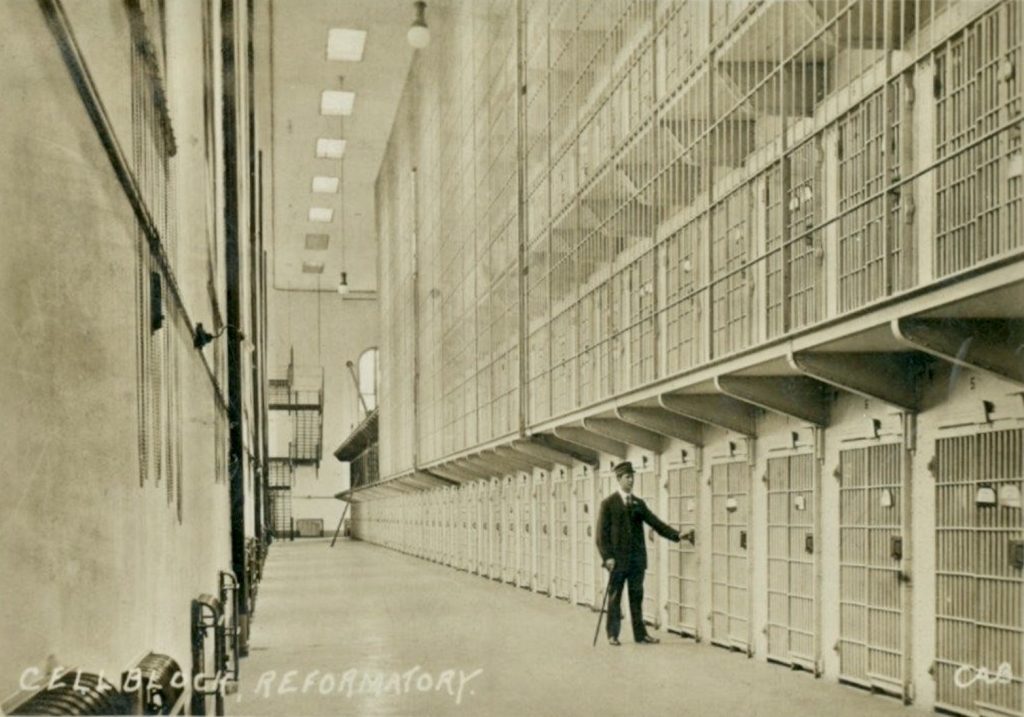
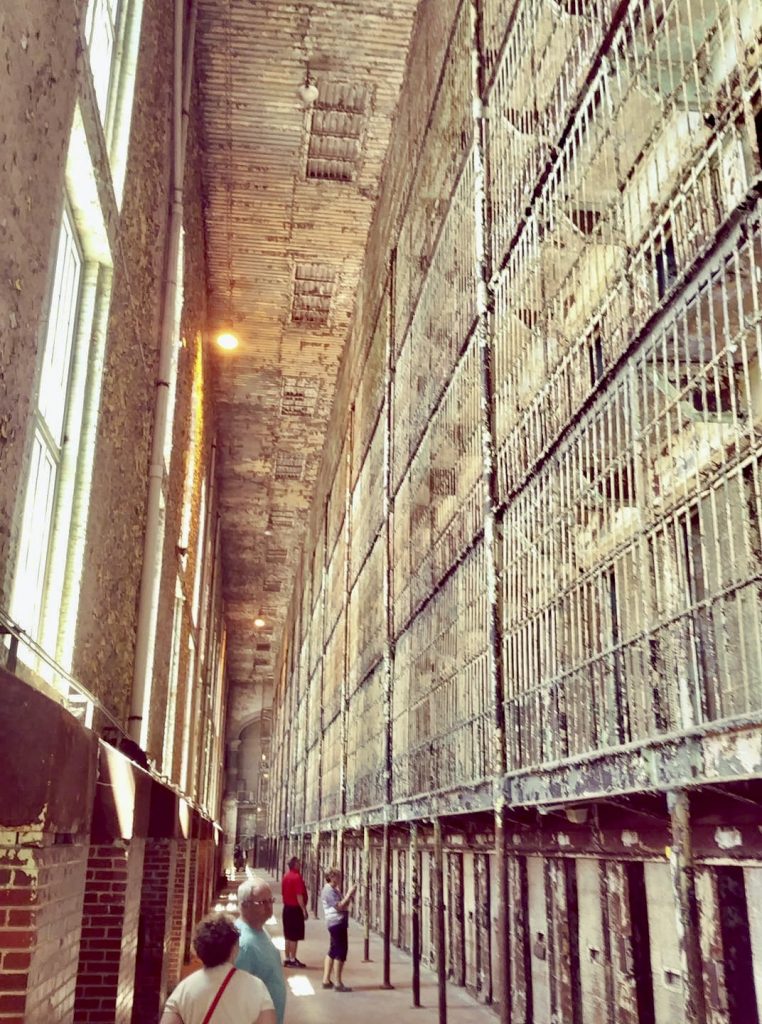
It’s hard to imagine the story being successful had it taken place anywhere else, which is a testament to the setting of prison which works just as much as a psychological prison with regards to a singular point of view Red begins with as it does a physical source of confinement.
That’s because stories that are well told often utilize their setting as a reflection of the main character’s mind; we come to see the years pass and the parole rejections which helps us to understand Red’s perspective of hopelessness which drives his cynical behaviors. Yet, he remains inauthentic to himself, continually toeing the line and telling the parole what he thinks they want to hear vs. the unfiltered words of wisdom he gives near the end.
The character of Brooks essentially demonstrate’s the story’s end-point of the hopelessness that can occur when a prisoner becomes institutionalized and subsequently set free into a world that’s now foreign to him. As such, the character embodies the story’s negative viewpoint and becomes a harbinger of Red’s own decision to make when he’s finding himself literally, and figuratively, following Brook’s footsteps.
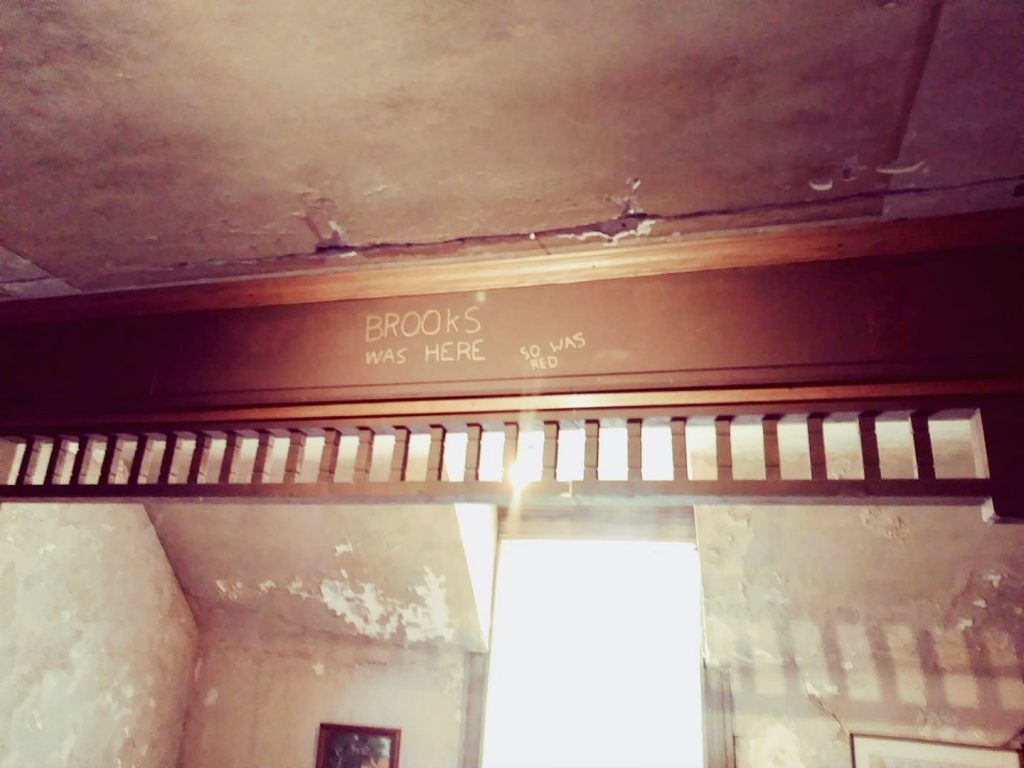
The Shawshank Redemption was not an instant success by any means up its initial release, though it would go on to garner enough accolades during the following year’s award season to pique audience’s curiosity when it was released on home video. There, it found its audience – and then some.
The awards the film was nominated for include:
Best Picture for producer Niki Marvin
Best Actor in a Leading Role for Morgan Freeman
Best Writing, Screenplay Based on Material Previously Produced or Published for Frank Darabont
Best Cinematography for Roger Deakins
Best Sound for Robert J. Litt, Elliot Tyson, Michael Herbick, and Willie D. Burton
Best Film Editing for Richard Francis-Bruce
Best Music, Original Score for Thomas Newman
Below: Go behind the scenes with Tim Robbins, Morgan Freeman and director Frank Darabont on the Charlie Rose Show.
Though it failed to win any Oscars, The Shawshank Redemption won the hearts of viewers and has consistently been ranked amongst moviegoers favorite motion pictures. The year after the film’s release, a preservation society was started to and the reformatory got a proverbial “stay of execution” from the wrecking ball.
Today, the Ohio State Reformatory is a tourist attraction, drawing thousands of visitors thanks to the emotional impact of The Shawshank Redemption. Money from the tours and donations go toward renovating the former reformatory which now seems to be undergoing its own form of redemption. A three-day concert event is held at the grounds each summer, paranormal tours and a 15-point self-guided driving tour around Mansfield to various filming locations known as the “Shawshank Trail” add to making the former reformatory a tourist destination.
You can find more about the Shawshank tours here, and the Shawshank Trail here.


